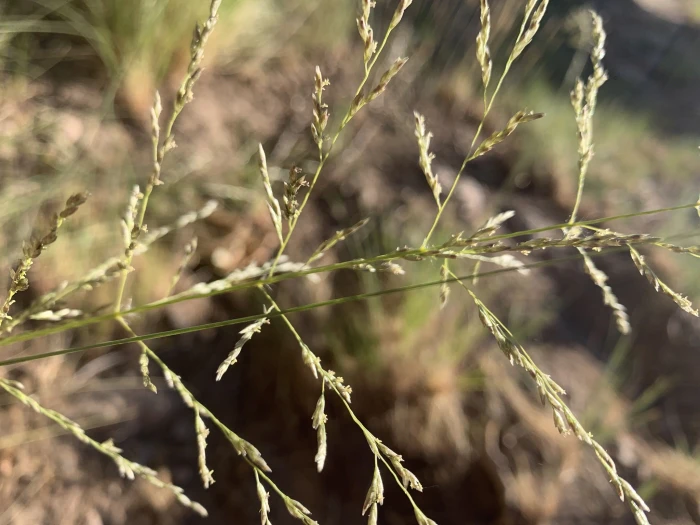Ringed Dropseed
(Sporobolus interruptus)
Ringed Dropseed (Sporobolus interruptus)
/
/

© mark-groeneveld
CC BY 4.0
Image By:
© mark-groeneveld
Recorded By:
Copyright:
CC BY 4.0
Copyright Notice:
Photo by: © mark-groeneveld | License Type: CC BY 4.0 | License URL: http://creativecommons.org/licenses/by/4.0/ | Uploader: mark-groeneveld | Publisher: iNaturalist |





Estimated Native Range
Climate Requirements
| • Precipitation | 16" - 28" |
| • High Temp. | 80°F - 96°F |
| • Low Temp. | 13°F - 32°F |
Summary
Sporobolus interruptus, commonly known as ringed dropseed, is a perennial grass native to Arizona. It typically grows up to 2 feet tall and is characterized by its fine-textured foliage and airy seed heads that appear in late summer to fall. The plant’s natural habitat includes not only prairies but also savannas and other open, dry areas where it contributes to the ecosystem by providing food and habitat for wildlife.
Ringed dropseed is highly valued for its exceptional drought tolerance, making it an excellent choice for xeriscaping and naturalized areas. It is often used in native prairie restoration projects due to its ability to adapt to poor soils and help with soil stabilization. In cultivation, it requires minimal care, thriving in full sun and tolerating a range of soil conditions, though it prefers sandy, well-drained sites. While it is not known for aggressive roots or significant disease problems, it can self-seed prolifically under ideal conditions, which should be considered when planting in garden settings.CC BY-SA 4.0
Ringed dropseed is highly valued for its exceptional drought tolerance, making it an excellent choice for xeriscaping and naturalized areas. It is often used in native prairie restoration projects due to its ability to adapt to poor soils and help with soil stabilization. In cultivation, it requires minimal care, thriving in full sun and tolerating a range of soil conditions, though it prefers sandy, well-drained sites. While it is not known for aggressive roots or significant disease problems, it can self-seed prolifically under ideal conditions, which should be considered when planting in garden settings.CC BY-SA 4.0
Plant Description
- Plant Type: Grass
- Height: 2-4 feet
- Width: 1-2 feet
- Growth Rate: Moderate
- Flower Color: N/A
- Flowering Season: Summer, Fall
- Leaf Retention: Deciduous
Growth Requirements
- Sun: Full Sun, Part Shade
- Water: Low
- Drainage: Fast, Medium, Slow
Common Uses
Bird Garden, Drought Tolerant, Erosion Control, Low Maintenance
Natural Habitat
Native to open grasslands with well-drained, sandy soils
Other Names
Common Names:
Scientific Names: Sporobolus interruptus , Sporobolus arizonicus
GBIF Accepted Name: Sporobolus interruptus